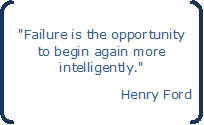- NJASA
- Executive Message - April/May 2014
-
A New Beginning….
“Every new beginning comes from some other beginning’s end.” That is a quote by the Roman philosopher Seneca, but it is probably better know as a lyric in the song “Closing Time” by the group Semisonic.
New beginnings can happen at any time. As spring arrives we especially think of new beginnings as we see flowers emerging from what was mostly a snow covered ground this past winter. In schools, however, administrators are marching through annual spring routines of administering what seem like endless standardized assessments, completing instructional observations, determining if teachers’ Student Growth Objectives have been met and completing annual performance evaluations for all personnel.
 All that while planning and conducting year end awards programs, sports banquets, and graduation ceremonies in addition to completing their daily duties.
All that while planning and conducting year end awards programs, sports banquets, and graduation ceremonies in addition to completing their daily duties.A new beginning always involves leaving one thing behind and embracing something new and different. Sometimes, however, new beginnings may not be of our own choosing or liking. I know that is how many school leaders feel about the demands placed upon them to learn new ways to assess teacher effectiveness, to complete the dramatic increase in classroom observations and yearly staff evaluations, and to “gear up” to the requirements of the Common Core State Standards and PARCC assessments.
I find in speaking with our colleagues that they support more rigorous standards and enhanced assessments for both staff and students. What frustrates them is the lack of time and resources to get the job completed at a high level of quality. A year ago I raised the question in this very forum of whether reforms would get done well or just get done. All too often our colleagues tell me that constraints of time and personnel this year have created a climate of rushing to meet requirements. Is that because school leaders aren’t motivated to make the system work most effectively? Of course not! It is a reflection of the fact that since 1990 there has been a 46% growth in the teaching force, 58% increase in certificated support staff, and a 3% decrease in administrative and supervisory personnel! Research and common sense tell us that the success of innovations is equally dependent upon their implementation as well as their quality. Greater demands, a steep learning curve requirement for professionals, and more staff and students to supervise than ever before don’t form a recipe for the most successful of outcomes. As one Chief Education Officer said recently, “I feel as though meeting all these new demands has transformed me into a manager and not the educational leader I seek to be for my district.”
But, spring is here, and perhaps there is a chance for a new beginning. Legislative proposals under consideration would delay the use of student assessments for educator evaluation and the use of PARCC assessments as a graduation requirement for a minimum of two years. Another would extend the QSAC monitoring to seven year intervals.
Perhaps the most important new beginning is that of Commissioner of Education Dave Hespe who recently returned to that post having held it during the Christie Whitman administration. Will Commissioner Hespe’s experience as a Chief Education Officer cause him to assess reform implementation in a way different than his predecessor, Chris Cerf? Might he take the opportunity offered by Secretary of Education Arne Duncan last June to postpone using student growth on state tests as a factor in personnel decisions for up to one additional year? Secretary Duncan made this offer with the understanding that a "robust" plan should be in place for making sure teachers are well-versed in new standards and assessments prior to their use in making personnel decisions. That delay was recommended a year ago to Commissioner Cerf by NJASA and every other major state education organization based on that very reasoning.
Hope springs eternal. But we need more than hope. Let’s help a new beginning along as educational leaders by speaking out on these important matters with constituents, legislators and government leaders. Let’s use our knowledge and experience in improving student outcomes as a basis to discuss how best to achieve the goals of educational reform by matching them with great implementation. Our united voice can and will make a difference for our students.



